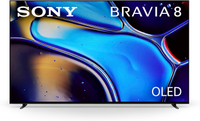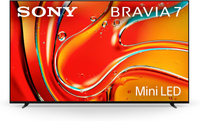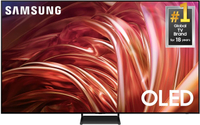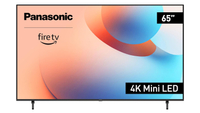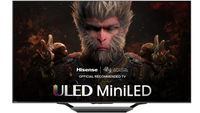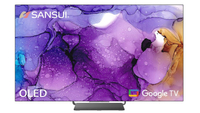Best 55-inch TVs of 2025 tested: Our top picks from LG, Samsung, Hisense and more
There are some incredible TVs in this ever-popular size
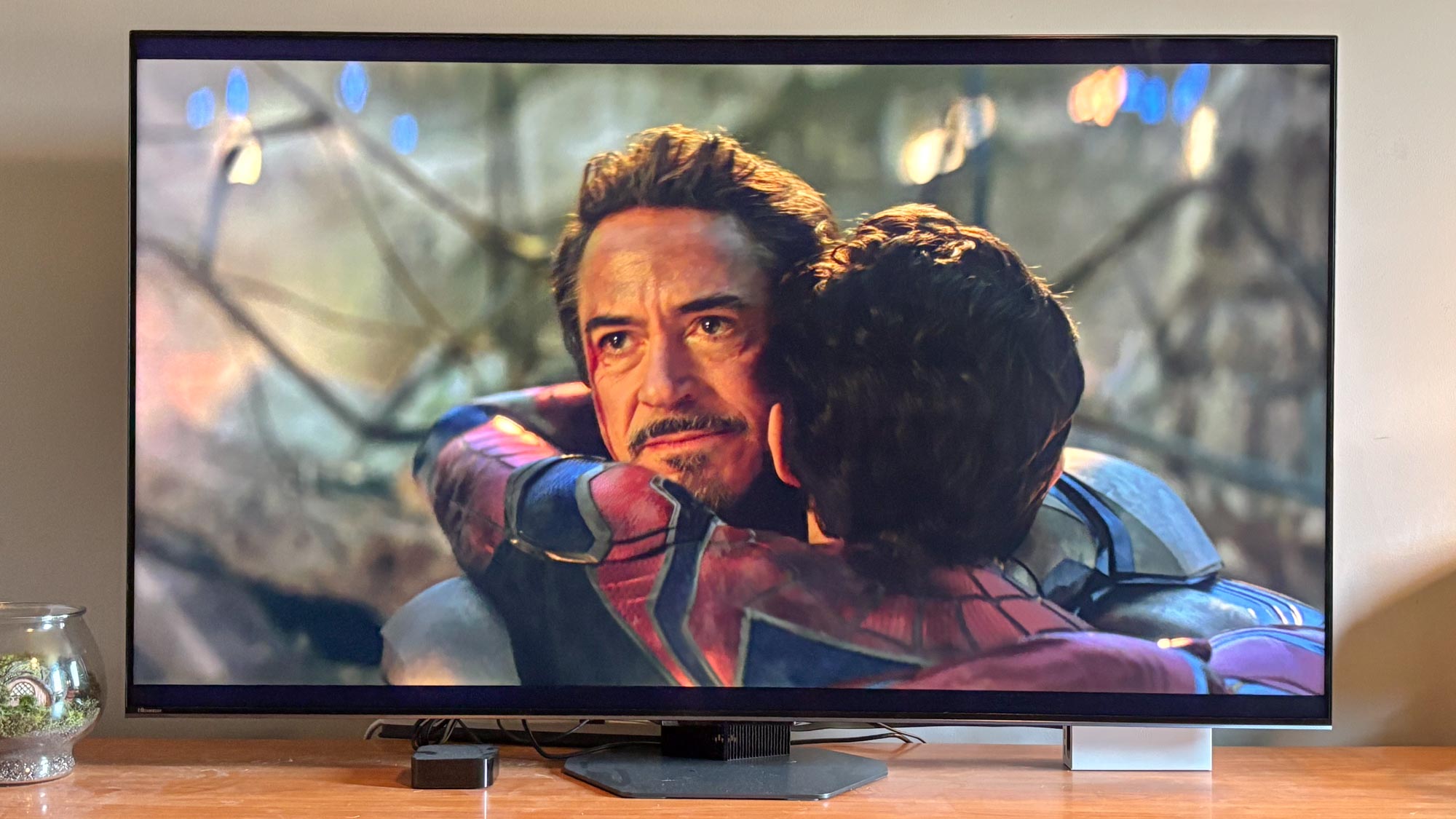
The best 55-inch TVs deliver top-notch performance, useful features at an agreeable price. They're perfect if you want to maximize your view in a smaller space or if you need something that won't completely dominate a room.
I've spent over a decade testing TVs and I've seen countless 55-inch sets in my day. They're one of the most popular 4K TV sizes right now. As a result, almost all of the best TV models — from the affordable to the ultra-premium — are available in a 55-inch version. This can make it overwhelming to shop for one.
Fortunately, I'm here to help. I've seen it all — from incredible, top-of-the-line 55-inch OLEDs to 55-inch QLEDs for less than $500.
The quick list
The best 55-inch TVs in 2025: quick list
Why you can trust Tom's Guide
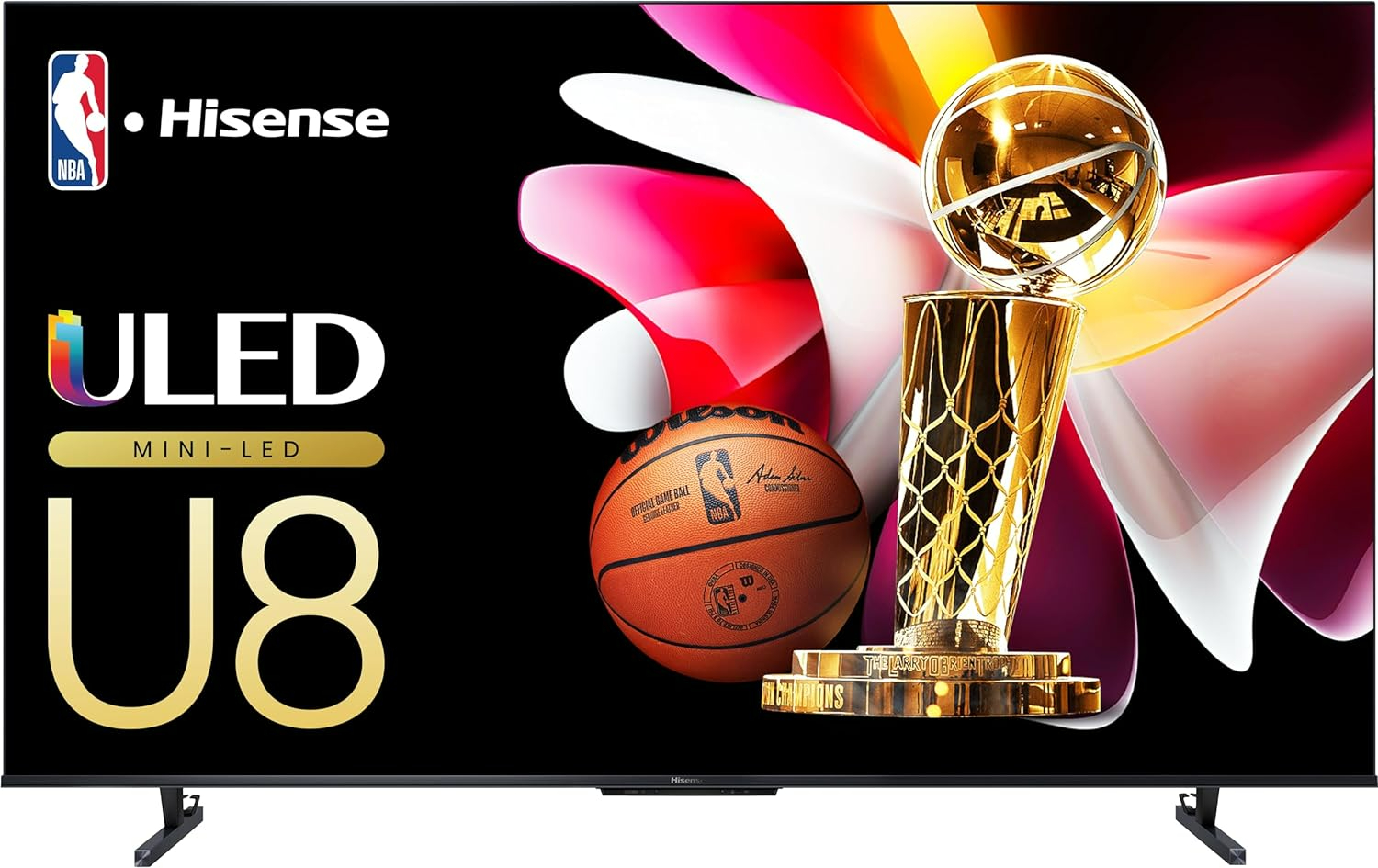
Picture ★★★★★
Features ★★★★★
Value ★★★★★
If you want the best 55-inch TV without over-paying for it, the Hisense U8N is the screen to go for. It uses Mini-LED backlighting for better contrast and higher brightness, and its Google TV smart platform is excellent across the board.
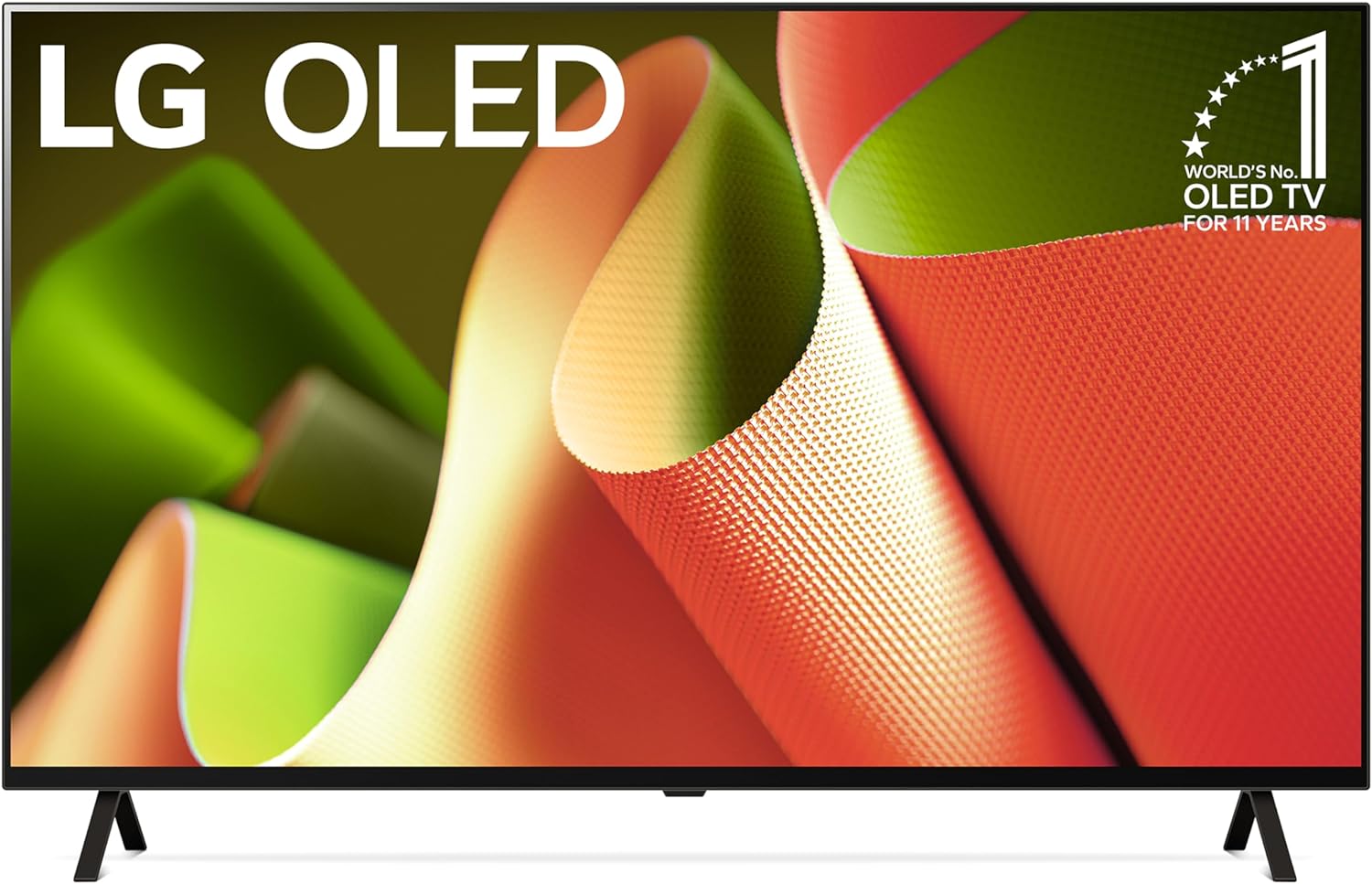
Picture ★★★★☆
Features ★★★★☆
Value ★★★★★
Dedicated gamers and A/V enthusiasts looking for an accurate picture will not be disappointed by the 55-inch B4, LG's entry-level OLED TV. While not as bright, it offers many of the same benefits as higher-end OLEDs.
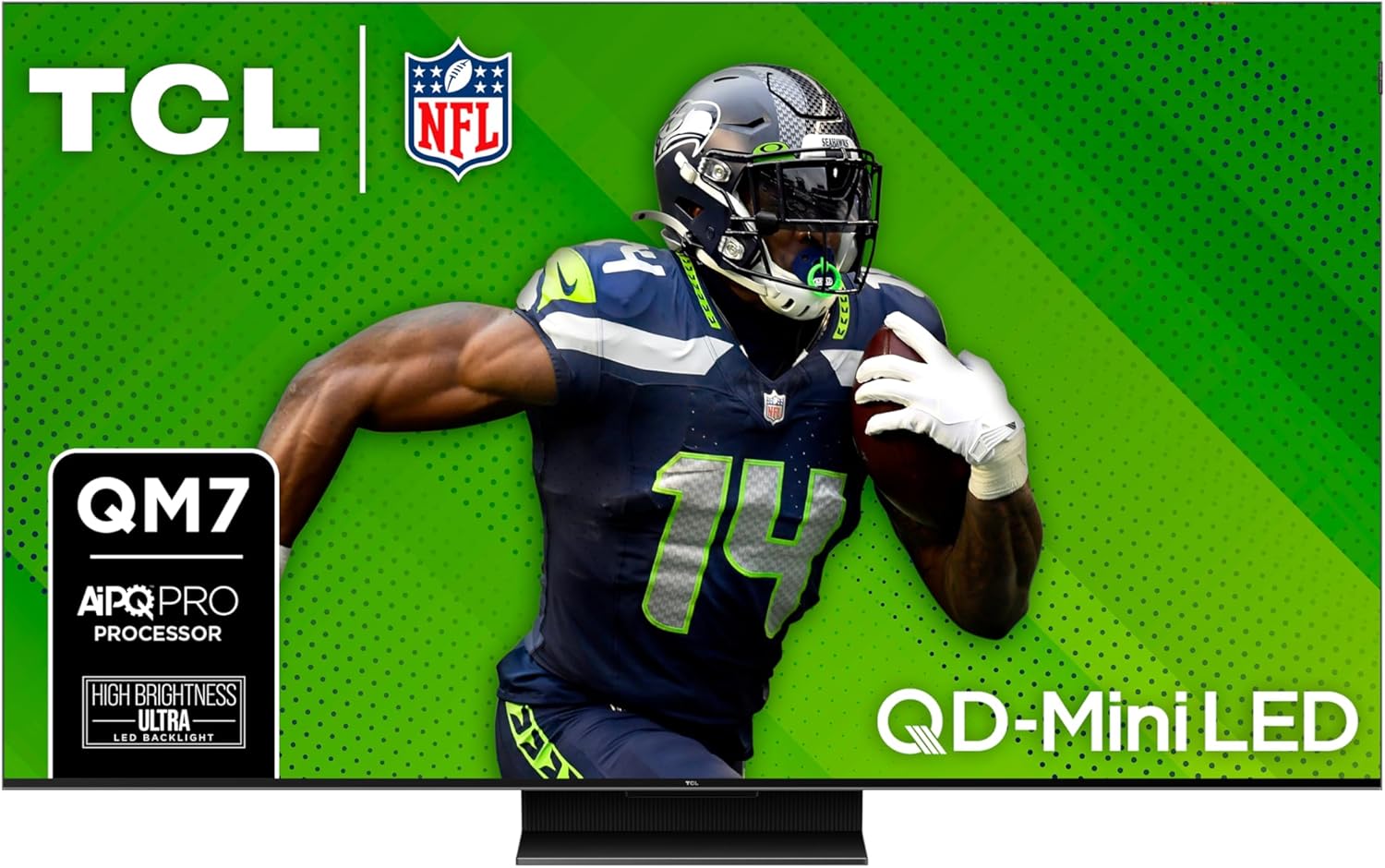
Picture ★★★★☆
Features ★★★★☆
Value ★★★★★
The TCL QM7 offers a bright, colorful picture, Google TV and a set of features good enough for dedicated gamers. It's one of the most affordable ways to secure a Mini-LED TV.
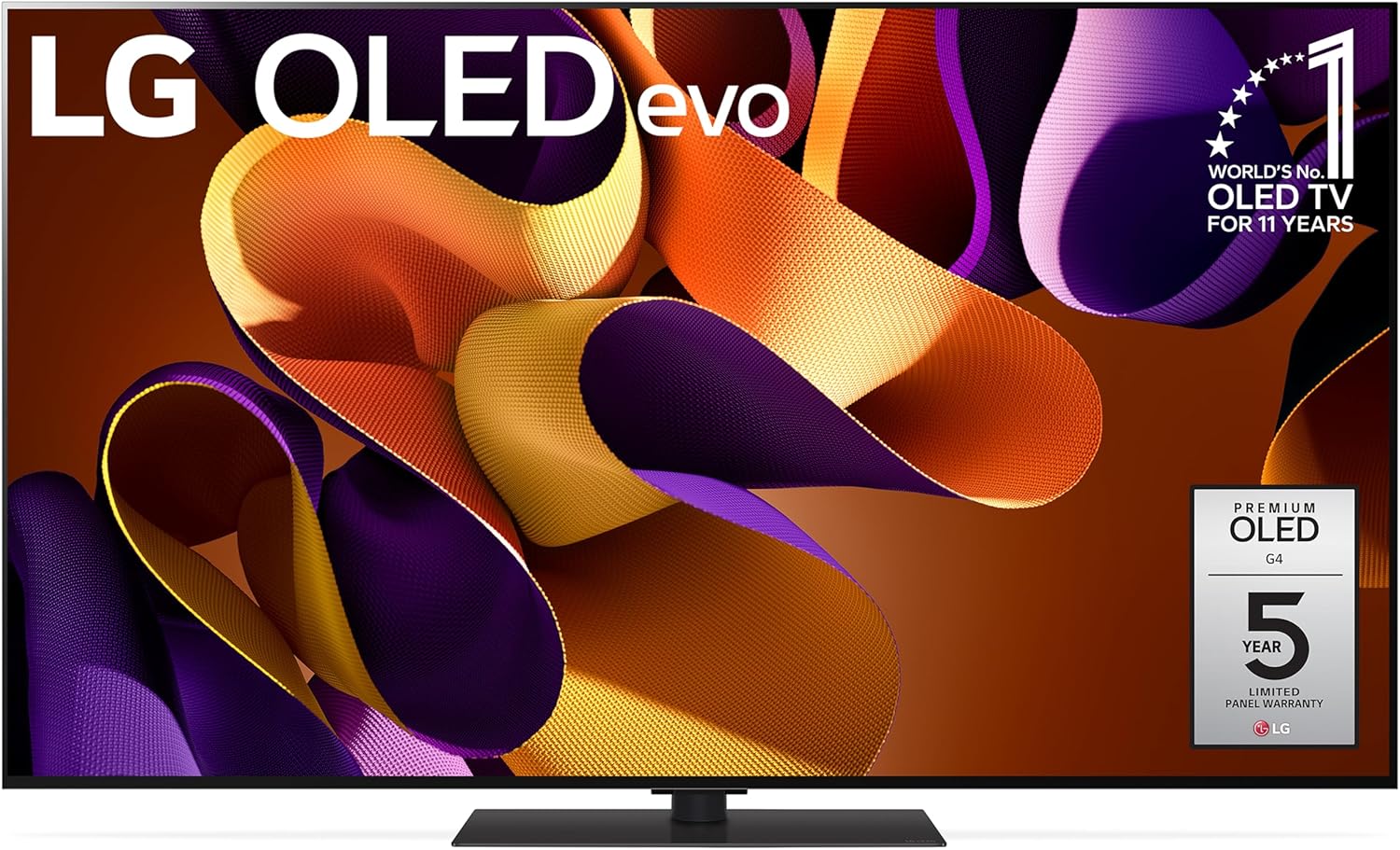
Picture ★★★★★
Features ★★★★★
Value ★★★☆☆
If the Hisense U8N wasn't such an incredible value, the LG G4 OLED would be at the top of this list. Ff you want a 55-inch OLED TV that will blow you out of the water, the G4 OLED will do just that. Its 2024 OLED panel is brighter than past years, and it comes with a 5-year warranty.
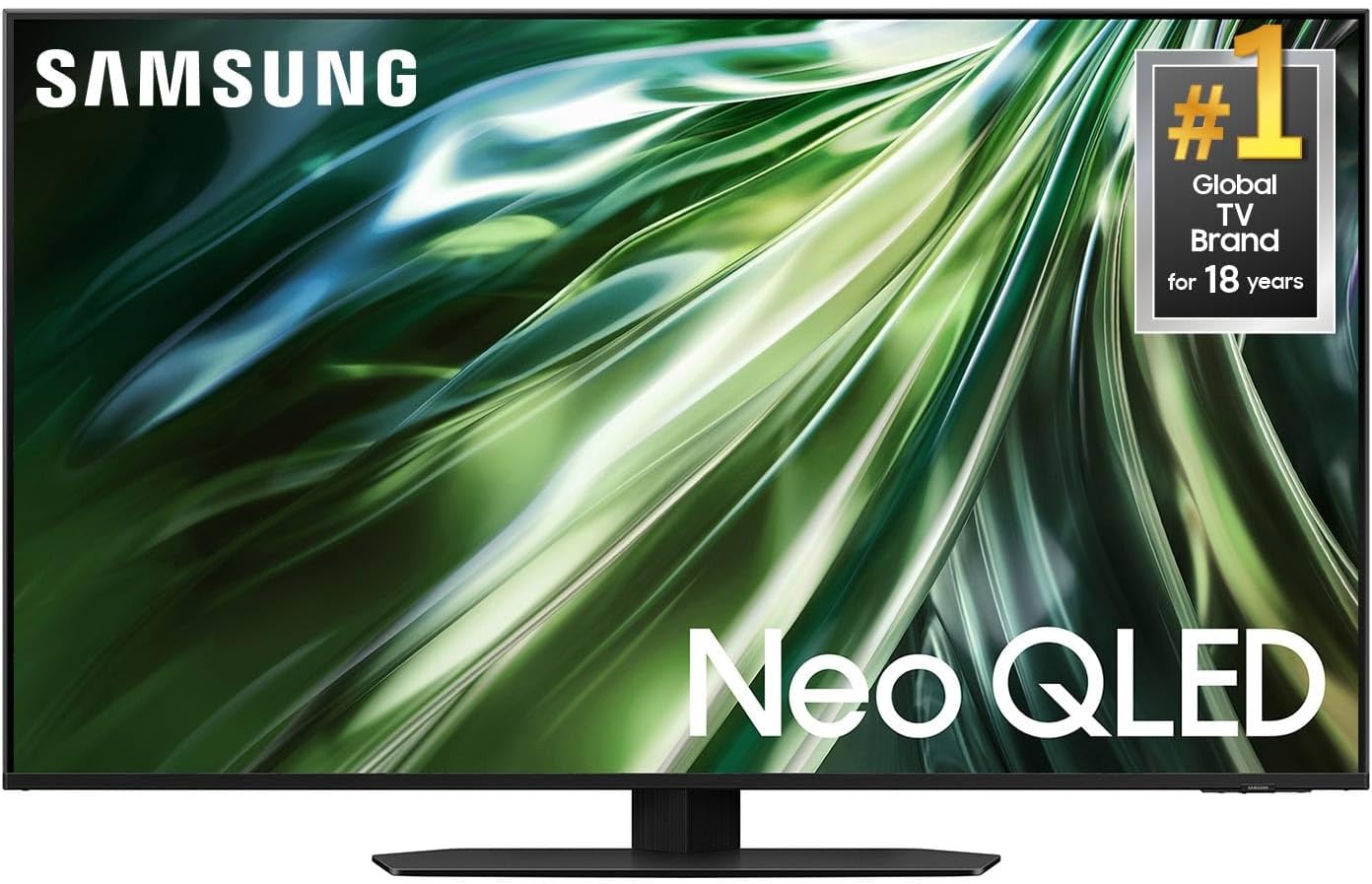
Picture ★★★★★
Features ★★★★★
Value ★★★☆☆
If you want a Samsung-made, 55-inch QLED, look no further than the QN90D Neo QLED. It's pricier than the Hisense U8N, but delivers high-end performance for 4K movies, standard TV shows, gaming and streaming. All four of its inputs are HDMI 2.1.
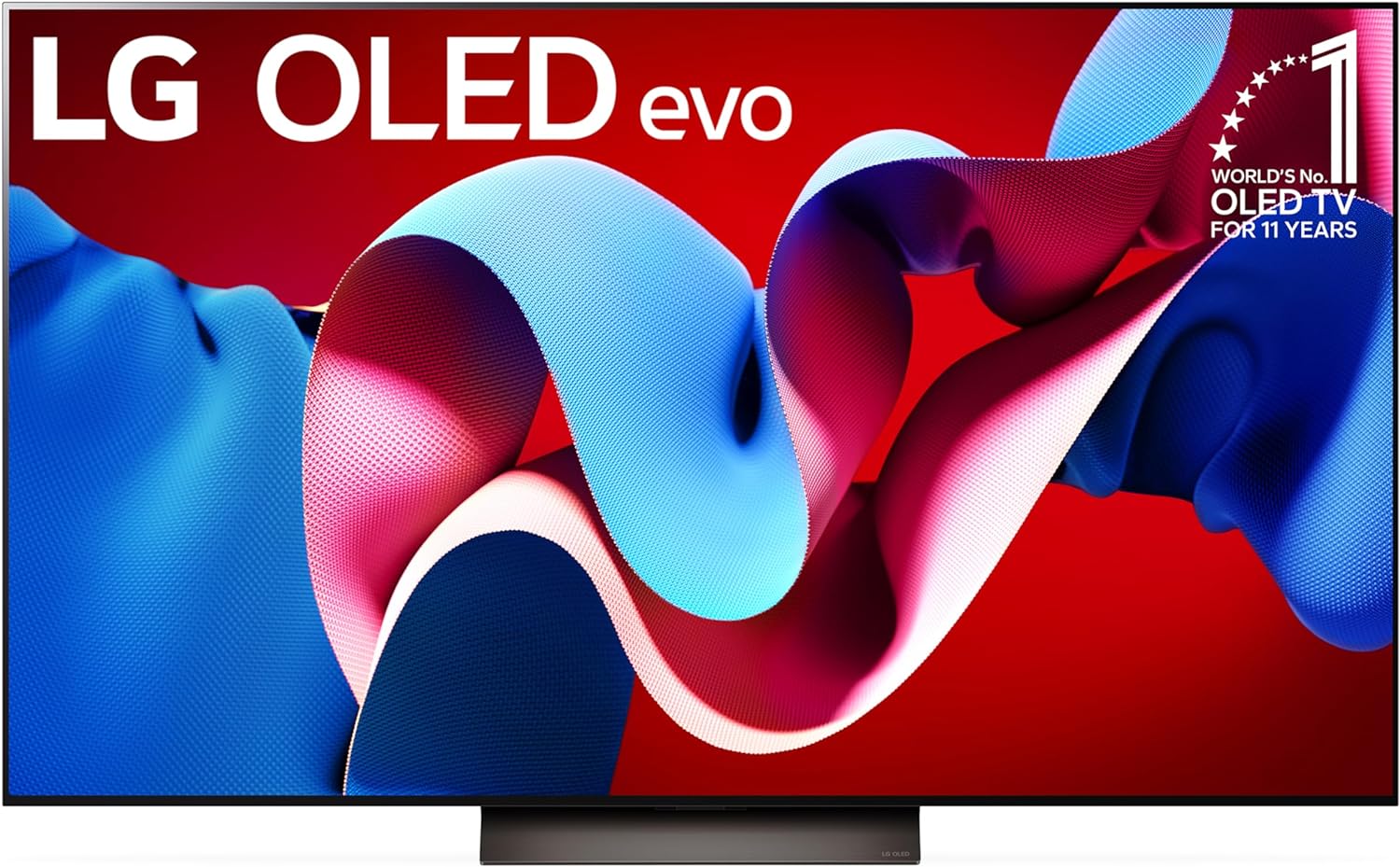
Picture ★★★★★
Features ★★★★★
Value ★★★★☆
Looking for a 55-inch TV that's worthy of being called a gaming powerhouse? Check out the LG C4, the best mid-range OLED of the year. All four of its HDMI 2.1 inputs support 4K gaming up to 144Hz, with LG's Game Optimizer, ALLM, and VRR along for the ride, too.
Read more below
About the author

My name is Michael, and I’ve evaluated well over one hundred TVs in my day. Many of these sets have been 55-inch models. Previously, I covered TVs for Reviewed, a division of USA Today.

My name's Nick and, for over a decade, I have been evaluating 55-inch TVs for major tech publications. Before I became Tom's Guide's Managing Editor of TV & AV, I was formerly the Senior Editor, TV and AV at TechRadar. Before my days in journalism, I helped folks just like you at a local Best Buy working in the TV department.
Best 55-inch TV
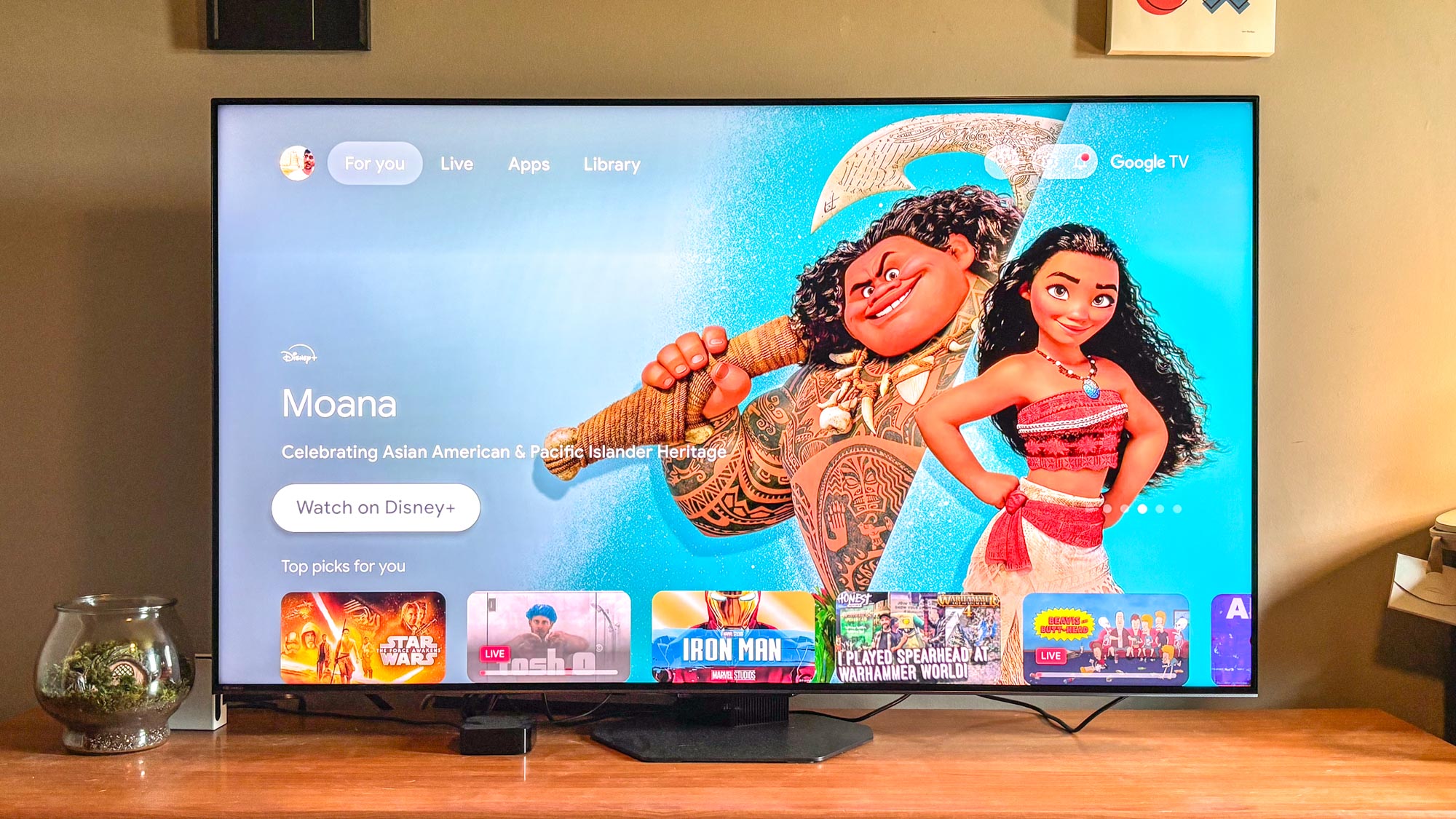
Specifications
Reasons to buy
Reasons to avoid
For two years straight, the Hisense U8 Series has held the top spot on our list. It's our pick for the best 55-inch TV for most people because it delivers outstanding performance for its price. Yes, OLED TVs are going to offer better black levels, but this Mini-LED gets twice as bright while still giving you beautiful colors and a truly fantastic smart platform.
So why didn't it score a perfect 5 out of 5 in our review? Well, two main reasons. We love that it offers a 144Hz refresh rate when connected to a gaming PC (120Hz for sports and movies), we measured its input lag at 13.1ms. That's a few milliseconds higher than the LG OLED TVs below. Also its color accuracy does require a bit of fine-tuning, as some scenes can look a bit oversaturated right out of the box.
When taking it for a spin at home, I was thoroughly impressed by the TV's contrast and black levels. The black bars on the top and bottom of the screen offered nearly OLED-levels of black while still maintaining a bright and colorful picture in the middle of the screen. Vivid mode was a bit too harsh for my tastes, so I recommend going for the Cinema Day or Cinema Night HDR picture modes, as they'll balance color saturation with the TV's 2,000-nit peak brightness.
Yes, a proper OLED TV (like our next pick, the 55-inch LG G4 OLED) is going to look better when you're looking at them side-by-side, but for the price, this is the best TV in the world, and getting anything else close will cost twice as much.
Read the full Hisense U8N review.
Best under $1,000
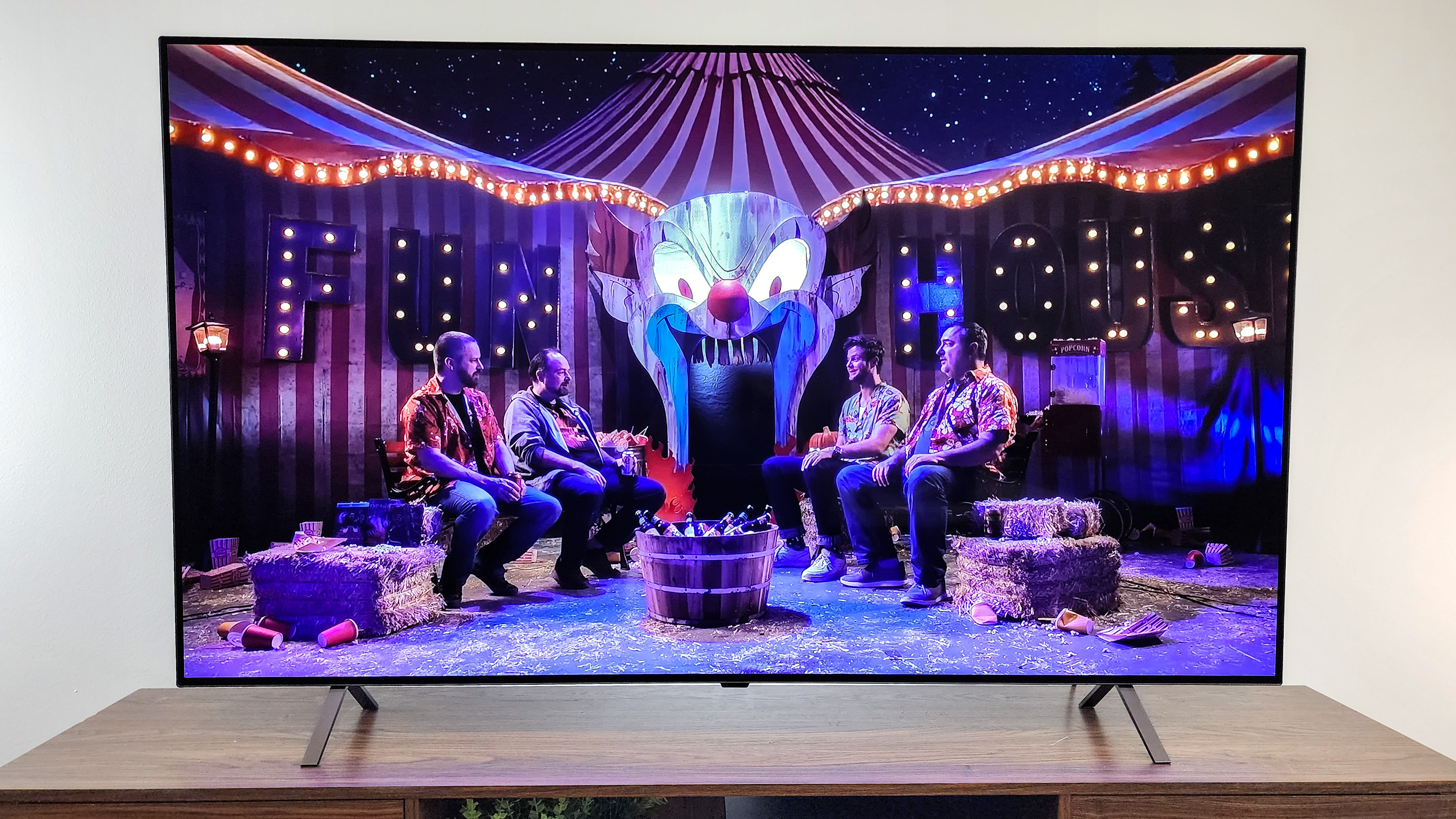

Specifications
Reasons to buy
Reasons to avoid
If you're looking for a phenomenal 55-inch TV for right under $1,000, consider the LG B4. It's LG's entry-level OLED TV for 2024, and right now, you can land a 55-inch version for right below $1,000.
The B4's best asset is its OLED display, which allows for perfect black levels and ultra-accommodating viewing angles. Even at this price point, the B4's high-contrast picture is impressive; its inky black levels help elevate its relatively dim highlights (which we clocked around 660 nits).
We were impressed by the B4's picture processing, particularly its motion handling. Fast-paced action movies and sports looked especially good in our lab. It's also worth noting that, in LG's Filmmaker mode, the B4 offers fantastic out-of-the-box color accuracy. Movie enthusiasts and home theater aficionados will love this.
I'm willing to bet that most dedicated gamers will love the B4, too, as it offers most of the gaming enhancements found on higher-end LG OLEDs (support for 4K gaming across all four HDMI 2.1 inputs, for instance).
If you're looking for a little more brightness but still prefer an OLED, the 55-inch LG C4 can be found for around $1,100 to $1,300 right now. It offers a brighter picture than the B4 and support for 4K gaming at 144Hz.
For most people, though, the B4 is a great compromise. It offers an impressive picture at a reasonable price.
Read our full LG B4 review.
Best under $500
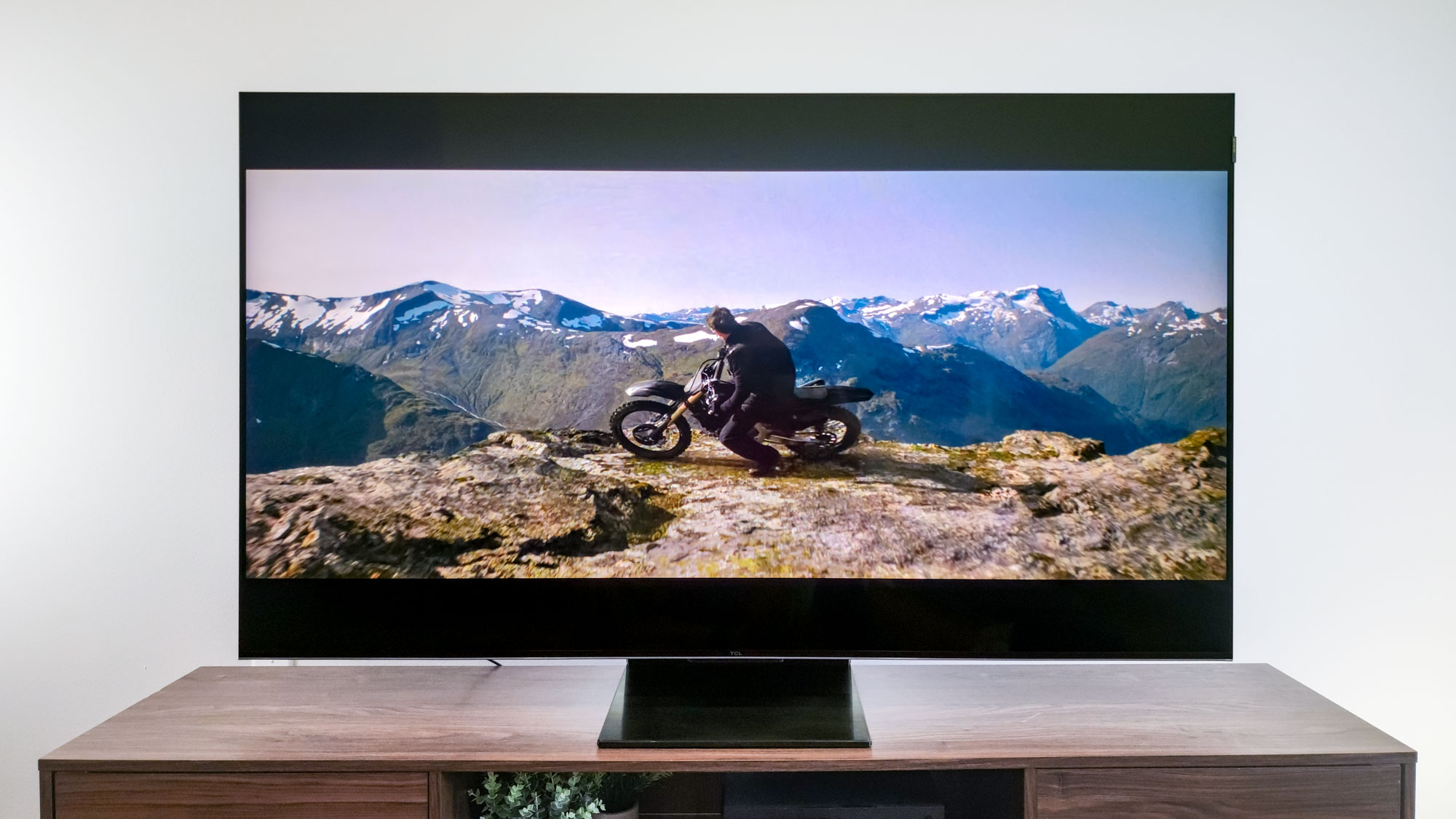
Specifications
Reasons to buy
Reasons to avoid
TCL’s mid-range Mini-LED TV first hit shelves in 2024, but it’s an excellent, value-packed TV with a ton of upside. And, because it debuted in 2024, the price for the 55-inch QM7 has fallen below $500.
As a mid-range model, the QM7 is built around Mini-LED backlighting. These LEDs are much smaller than garden-variety TV backlights, and their small stature allows for some serious perks.
For one thing, the QM7 gets much brighter than most entry-level TVs. We measured peak HDR highlights above 1,700 nits. For comparison, the Samsung Q60D — an entry-level QLED without Mini-LED backlighting — only gets as bright as 450 to 500 nits. If you’re determined to spend roughly $500 for a 55-inch TV, it’s worth considering the QM7 on its brightness alone.
Another benefit of Mini-LEDs is that they typically allow for better contrast control than standard LED TVs. This is especially important for darker content, like contemporary TV shows and certain movies.
But A/V enthusiasts and those with bright rooms aren’t the only people who stand to benefit from what the QM7 is bringing to the table — it’s also equipped with plenty of features for casual and dedicated gamers. These include two HDMI 2.1 inputs, support for 4K gaming at 120Hz or 144Hz, VRR and more.
With its bright, colorful picture, its solid selection of gaming features and its built-in Google TV functionality, the QM7 should be at the top of any shopping list where “55 inches” and “under $500” are among the criteria.
Read our full TCL QM7 Mini-LED TV review.
Best OLED
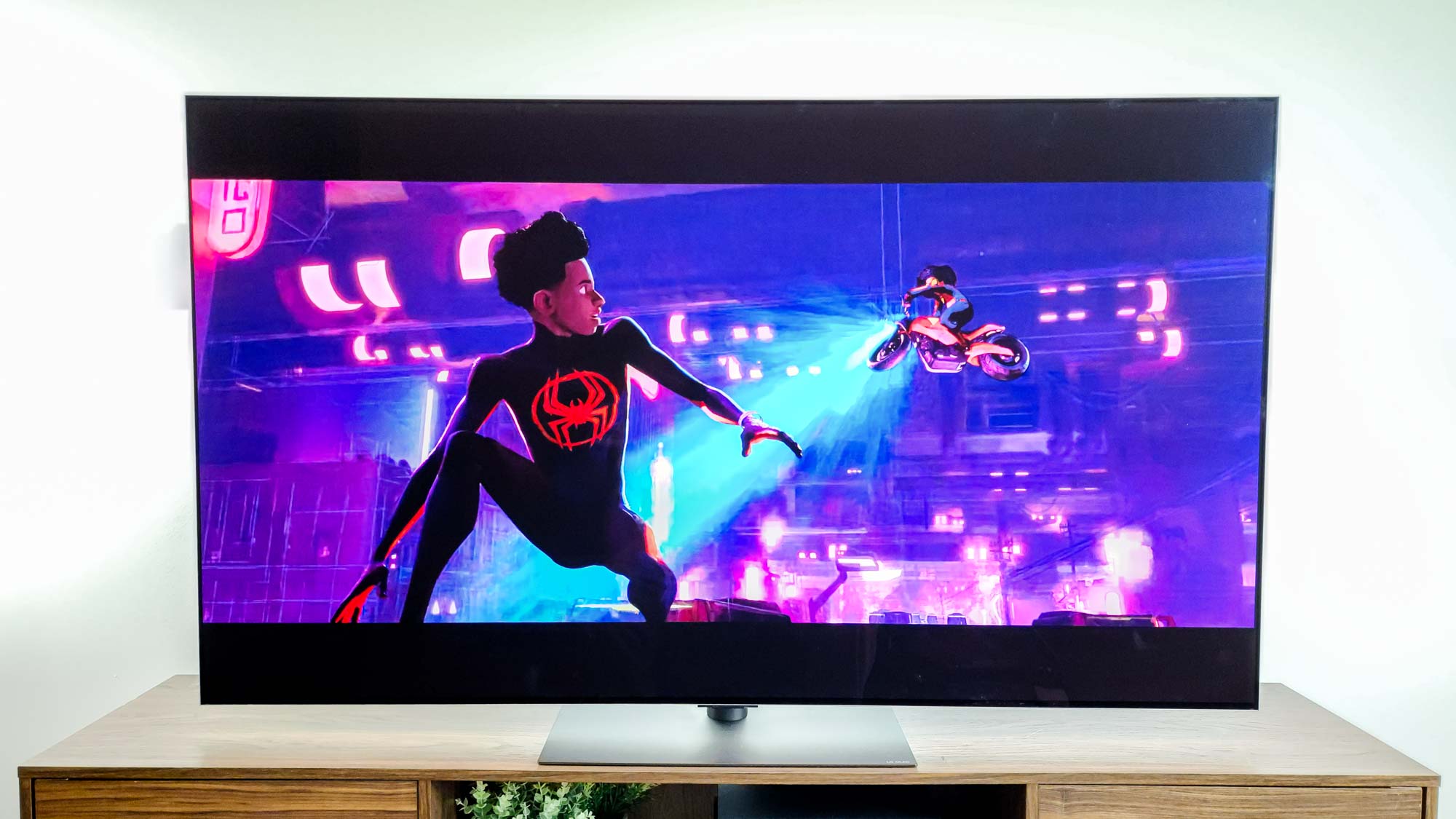

Specifications
Reasons to buy
Reasons to avoid
You might have come into this guide expecting to see a 55-inch OLED TV at the top of the list — and look, if the Hisense U8N wasn't such an incredible value, the G4 OLED would be the top pick. It's just a little pricey to be our overall winner.
That said, if you aren't put off by its relatively high price tag, the LG G4 OLED offers cinema-like performance at a living-room size. It's one of the brightest OLED TVs on the market thanks to its 2024 LG Display MLA panel, and it offers some really impressive AI features that improve picture and audio quality. Under the hood it's running LG's new α11 AI Processor 4K processor that makes upscaled content look better and motion look sleeker (once you turn off TruMotion, that is).
In our lab tests, the LG G4 OLED put out close to 1,500 nits in HDR with a color accuracy of 1.4 (lower numbers are better here). Compared to the U8N, the G4 can't get as bright, but the colors are much more accurate right out of the box. Also remember that the contrast of the G4 is going to be outstanding, as an OLED's pixels can reach pitch darkness when turned off.
You're paying a premium for the G4 OLED, there's no denying it. For a lot of folks looking to invest in a TV that's going to look great for years to come, I think the G4 OLED is a great option. It's just a hard sell when you can get around 80% of the same performance for under $800.
Read the full LG G4 OLED review.
Best Mini-LED
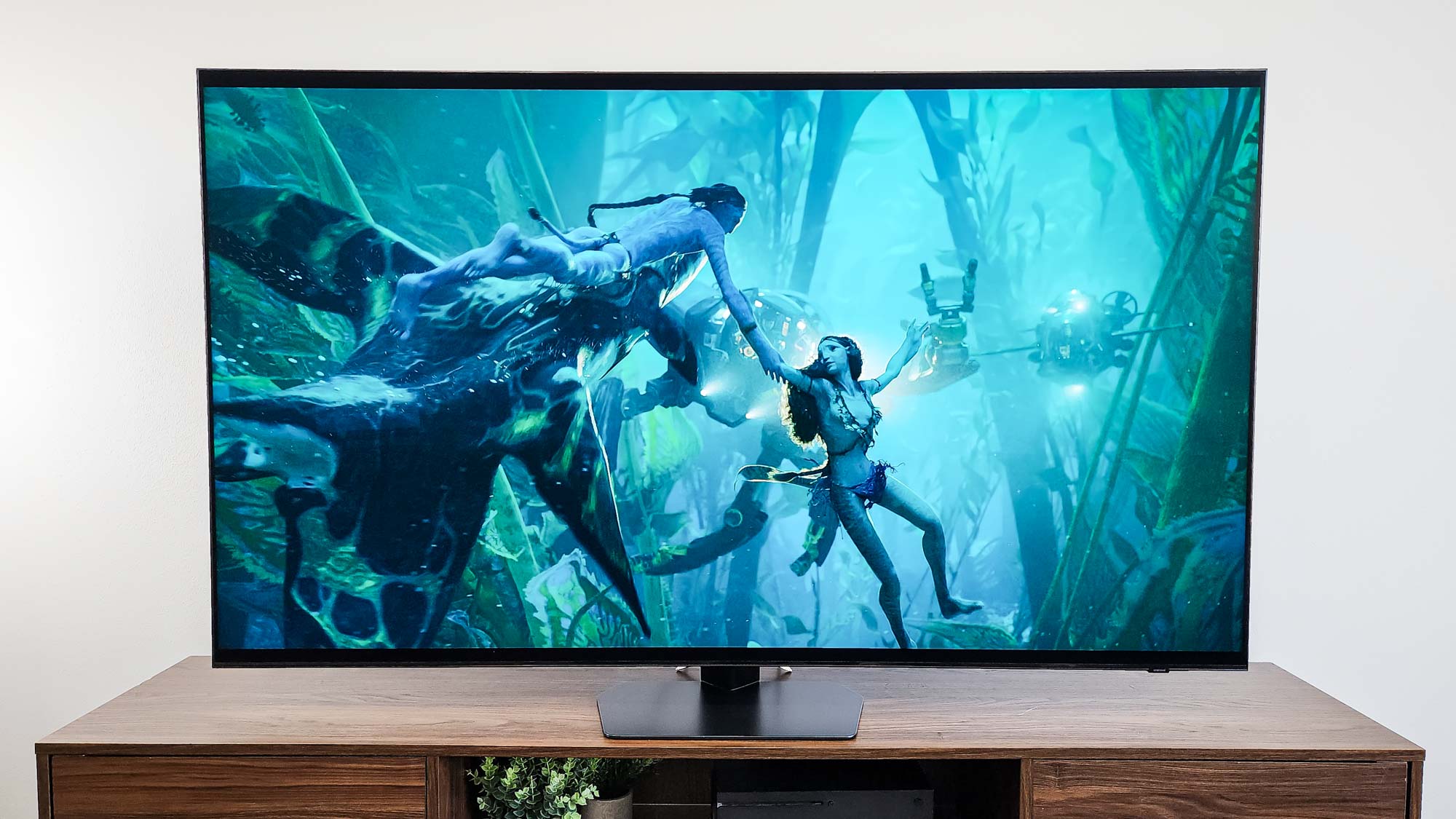

Specifications
Reasons to buy
Reasons to avoid
At the 55-inch screen size, competition is fierce. The Samsung QN90D doesn't have as wide of an appeal as the affordable, 55-inch U8N, but it's one of the best Mini-LED TVs of the year (as well as one of the top models from Samsung).
Our reviewer, Matthew Murray, heaped praise on this set for its impressive brightness and exceptional contrast. Like the Hisense U8N, the QN90D uses a blend of Mini-LED backlighting and quantum dots to deliver this level of performance. However, it also uses Samsung's NQ4 AI Gen2 Processor for better upscaling. Folks who own a Samsung mobile device will find some neat crossover features between it and the TV, and the TV's build-in smart platform, Tizen, is a good alternative to Google TV (though not quite as good, in my opinion).
Its four full-spec HDMI 2.1 ports for 4K/120Hz gaming are a huge boon for console gamers, however Tizen offers apps like Xbox and GeForce Now that let you game without ever hooking up extra hardware.
Read our full Samsung QN90D Neo QLED TV review.
Best for gaming
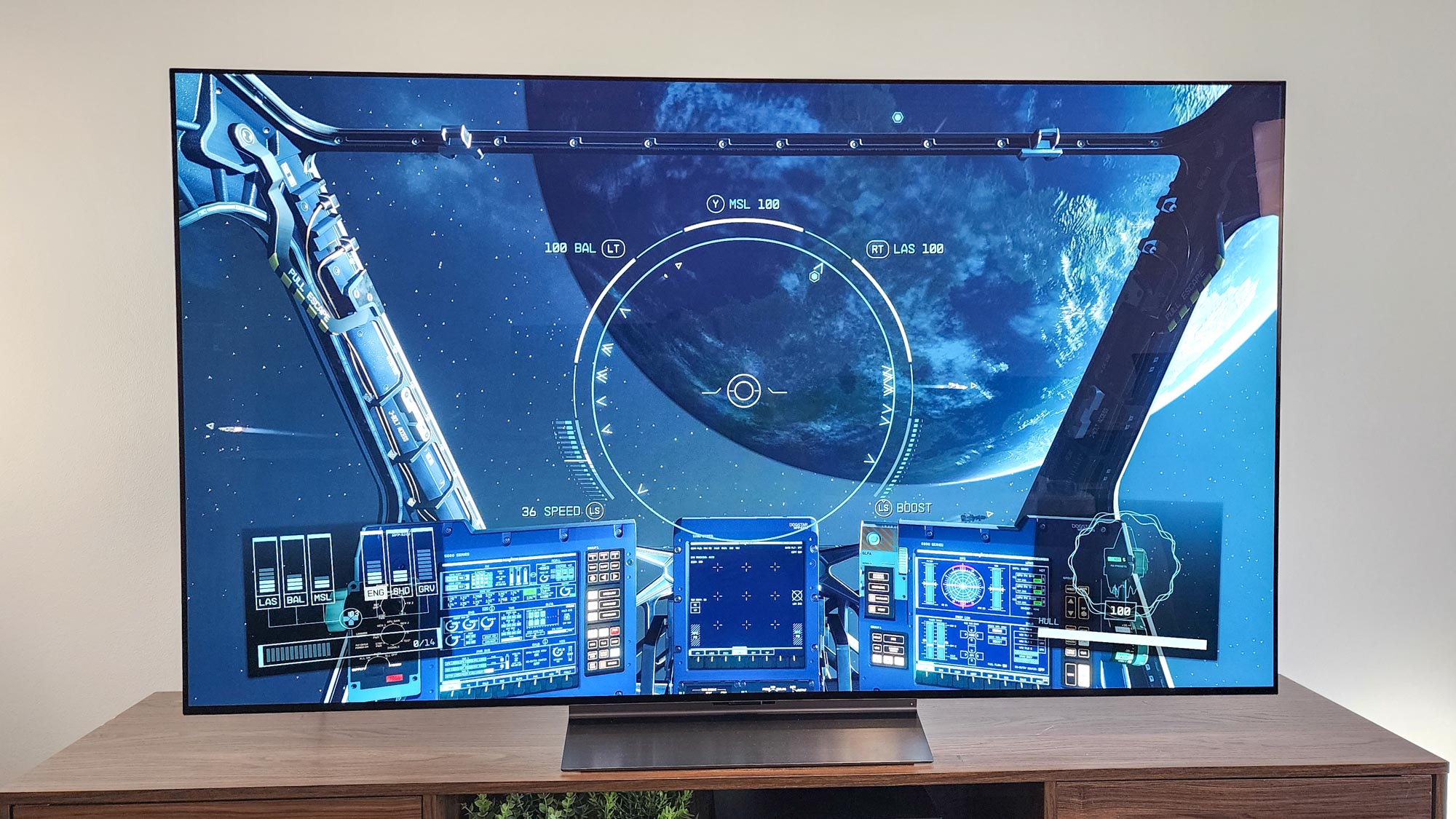

Specifications
Reasons to buy
Reasons to avoid
While movie lovers will certainly enjoy the 55-inch LG C4, it's gamers who will get the most bang for their buck with this screen as it packs all of the best gaming features from the flagship G4 OLED into a more affordable TV.
In addition to its incredible picture, the C4 supports nearly every sought-after gaming feature: support for 4K gaming up to 144Hz, a full suite of HDMI 2.1 inputs, Nvidia G-Sync compatibility and AMD FreeSync support. You're also getting support for Dolby Vision gaming and LG's Game Optimizer mode.
The 55-inch LG C4 is not just one of the best gaming TVs on the market, it's one of the best all-around TVs, too.
Read our full LG C4 OLED review
Best 55-inch TV test results
TV | HDR peak brightness (tested) | Delta-E (tested) | Rec. 2020 gamut coverage | Input lag (tested) |
Hisense U8N | 3,296 nits | 3.2 | 82.07% | 13.1ms |
LG G4 | 1,487 nits | 1.7 | 72.91% | 9.2ms |
Samsung QN90D | 2,024 nits | 2.6 | 72.52% | 9.6ms |
LG B4 | 659 nits | 0.8 | 74.92% | 9.7ms |
TCL QM7 | 1,732 nits | 1.9 | 76.87% | 13.2ms |
LG C4 | 1,049 nits | 1.8 | 72.27% | 9.2ms |
Sony A95L | 1,215 nits | 2.8 | 89.41% | 16.1ms |
Other 55-inch TVs we tested
Not all 55-inch TVs end up on our list of the best, but plenty of them are great options nonetheless. If none of the sets above sound appealing, take a look at the following recently reviewed picks.
Sony Bravia 8 OLED (★★★★☆)
The newest 55-inch Sony OLED is the Bravia 8, and while we found it to be relatively dim compared to other mid-range OLED TVs, Sony's upscaling and overall picture processing make it an attractive option for viewers with a discerning eye. It's worth noting that it's gaming features aren't as robust as the C4, which is why we recommend the 55-inch C4 for dedicated gamers.
Read our full Sony Bravia 8 OLED review.
Sony Bravia 7 Mini-LED TV (★★★★☆)
If you want something brighter than the Bravia 8 but still branded with the Sony logo, consider the Bravia 7. It's the only 2024 Mini-LED TV from Sony available in 55 inches. The Bravia 7 blends a bright, colorful picture with Sony's incredible picture processing.
Read our full Sony Bravia 7 Mini-LED TV review.
Samsung S85D OLED (★★★★☆)
Samsung's entry-level OLED is worth looking into if you're shopping for an affordable 55-inch OLED TV. It offers many of the same features as a higher-end Samsung OLED, but with a friendlier price tag. Just be aware of the fact that, like the LG B4, it's not as bright as better-performing OLED TVs.
Read our full Samsung S85D OLED TV review.
Panasonic W95A Mini-LED TV (★★★★☆)
The 55-inch Panasonic W95A is a Mini-LED with a fantastic picture. In our tests, the W95A impressed us with HDR highlights approaching 1,500 nits and fantastic out-of-the-box color accuracy. Its built-in Fire TV smart platform isn't our preferred choice, however, which puts it at a slight disadvantage compared to other 55-inch Mini-LED TVs (like the Hisense U8N).
Read our full Panasonic W95A Mini-LED TV review.
Hisense U7N (★★★☆☆½)
This is Hisense's mid-range 55-inch Mini-LED TV for 2024. It's not as bright as the higher-end, 55-inch U8N, but it's a much better option for gamers and home theater enthusiasts on a budget than the ultra-affordable, 55-inch TCL Q6.
Read our full Hisense U7N review.
Sansui OLED TV (★★★☆☆)
The Sansui OLED is one of the most affordable OLED TVs you can buy and is only available in a 55-inch model, so naturally, we had to include it on this list. It's doesn't deliver the bright, punchy picture you'll see on mid-range and high-end OLED TVs, but it is an 55-inch OLED TV priced at around $700, so it's got that going for it. It also comes with two HDMI 2.1 inputs and a 120Hz native refresh rate.
Read our full Sansui OLED TV review.
How to choose the best 55-inch TV for you
How to choose the best 55-inch TVs for you
Our TV buying guide breaks down the key factors that should go into purchasing a new set, as getting a TV is an investment. It’s a piece of tech you’re likely to own for several years, which is why you want to make sure you’re picking the best 55-inch TV for you.
Size: First figure out whether you’re locked into a 55-inch set. Just because it’s the biggest size that fits on your wall or TV stand doesn’t mean that it’s right for the room. Similarly, consider if a 65-inch TV would better suit your space.
Price: Expect to pay about $500 for a good 55-inch 4K TV. The Insignia 55-inch 4K Fire TV Edition above is the absolute cheapest we’d recommend based on our catalog of TV testing. But if you have a tighter budget, check out our best TV deals for some alternatives. Keep in mind performance will take a hit in lower price ranges, though.
HDR: If you want the most colors, get one of the HDR sets with Dolby Vision compatibility above. This technology is able to deliver more colors, more contrast levels and increased brightness. It could make a set a bit more costly, but it guarantees you’ll still be satisfied with TV as the Dolby Vision format seems to be gaining momentum.
Ports: Another thing to consider is port offerings. Some of the sets above sport 3 HDMI ports, while some have 4. In general, more ports is better, especially if you have a collection of input devices like soundbars or game consoles.
What are we looking for in our testing?
Peak Brightness: The highest level of brightness (measured in nits) that a TV can sustainably put out in a 10% window.
Delta E: A measurement of how accurate colors are right out the box in its Calibrated or ISF Modes. The lower the number, the more accurate the colors are.
DCI-P3 Color Volume: This metric measures the total coverage area of a TV's color output. A higher percentage means better color expression. We also measure a TV's color output against the Rec2020 color space as well.
Input lag: An important metric for gamers, input lag measures the total time it takes for a signal that passes through the HDMI port to appear on the screen.
How we test the best 55-inch TVs
How we test the best 55-inch TVs
Testing the best 55-inch TVs is a thorough process. We put every TV through our custom lab test, measuring color gamut, color accuracy and brightness to objectively see which sets are the best for these key indicators. We also test for lag time, measuring to the millisecond how long it takes for content to travel from the original source to the screen. We use these results to make numbers-based comparisons about color and display quality.
To do this, we run all of these TVs through a series of technical tests designed to determine their performance on a quantitative level. We perform these with an X-Rite i1 Pro spectrophotometer, a SpectraCal VideoForge Pro pattern generator, and Portrait Displays’ Calman calibration software that measure and charts the TVs' performances.
In addition, we spend hours with each set to see how our lab results translate into anecdotal performance. We also compare competing sets using a range of content across several sources. With that information, we can tell you which TVs look best, sound best and offer the best viewing experience.
Of course, we also consider the smart TV functions and apps for each TV, looking at everything from the remote control design to the voice interaction.
Sign up to get the BEST of Tom's Guide direct to your inbox.
Get instant access to breaking news, the hottest reviews, great deals and helpful tips.

Michael Desjardin is a Senior Editor for TVs at Tom's Guide. He's been testing and tinkering with TVs professionally for over a decade, previously for Reviewed and USA Today. Michael graduated from Emerson College where he studied media production and screenwriting. He loves cooking, zoning out to ambient music, and getting way too invested in the Red Sox. He considers himself living proof that TV doesn't necessarily rot your brain.
